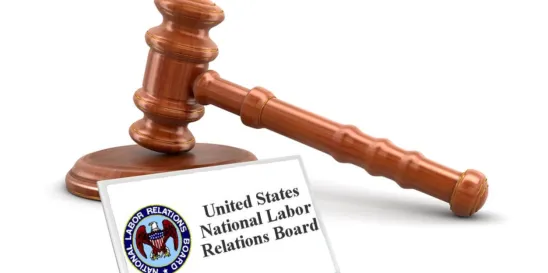As if it weren’t already clear that employers will be receiving only lumps of coal in their stockings from the National Labor Relations Board (NLRB) this year (see e.g., here and here), on December 8, 2023, the NLRB’s General Counsel published a memo that serves as a “Grinchy” reminder regarding the union-friendly changes that are scheduled to take effect for union representation elections immediately after the Christmas holiday on December 26, 2023. While the memo reiterates the NLRB’s current position that the 2023 election rule removes “unnecessary barriers to the fair and expeditious resolution of representation cases” and will achieve “the goal of fairly, efficiently, and expeditiously resolving questions concerning representation,” it also acknowledges that the expedited election procedures will “meaningfully reduce the time from petition filing to election and expedite the resolution of any post-election litigation.”
The NLRB’s December memo outlines the significant differences between the new election procedures and the existing procedures as well as summarizes how representation cases will be processed by the NLRB once the 2023 rule takes effect. These differences include the following:
- Pre-election hearings will be scheduled to start 8 calendar days after petition filing, which is approximately 10 days earlier than under the existing election procedures;
- A non-petitioning party’s written response to a representation petition will be due 7 calendar days after petition filing, which is 3 calendar days sooner than it is due presently;
- Petitioners will be allowed to respond orally to the non-petitioning party’s Statement of Position at the start of the pre-election hearing instead of having to file and serve a written response to the Statement of Position 3 days in advance of the pre-election hearing;
- Postponements of either the pre-election hearing or the due date for the Statement of Position will only be for 2 business days upon a showing of special circumstances and for more than 2 business days upon a showing of extraordinary circumstances instead of the unlimited time for good cause previously permitted at the discretion of the Regional Directors;
- Employers must post and distribute the Notice of Petition for Election in conspicuous places and distribute it electronically (if electronic communication with employees in the petitioned-for unit is customary) within 2 business days after service, rather than the 5 business days permitted under the existing rule;
- Only issues necessary to determine whether an election should be conducted will be decided in a pre-election hearing, and issues and evidence regarding eligibility to vote and inclusion in an appropriate bargaining unit will be considered at the post-election stage (after a vote) if they don’t have to be resolved in order to determine whether an election shall be held;
- Parties will be provided with an opportunity for oral argument before the close of the election hearing and will only be allowed to file written briefs with the permission of the Regional Director (pre-election hearings) or Hearing Officer (post-election hearings) and will be limited to addressing subjects permitted by the Regional Director or Hearing Officer instead of being automatically allowed to submit briefs as they are under the current procedures;
- Election details (e.g., type, date, time, location, eligibility period, etc.) will be specified in the decision and direction of election, and the Notice of Election will be simultaneously transmitted within the decision and direction of election;
- The Notice of Election will advise employees that eligibility to vote or inclusion of individuals in the bargaining unit will be resolved, if necessary, following the election and will advise employees that challenged individuals are neither included in, nor excluded from, the bargaining unit and that they have been permitted to vote subject to challenge; and
- Elections will be scheduled for the “earliest date practicable” after issuance of a decision and direction of election and the current 20 business day waiting period will be eliminated.
In short, these election procedures will (i) significantly reduce the amount of time it takes to schedule and hold an election, (ii) substantially decrease the amount of time available for employers to campaign in opposition to representation, (iii) eliminate or postpone disputes over whether certain individuals should be included in the bargaining unit and/or allowed to vote until after an election has already been held, and (iv) eliminate or substantially reduce opportunities for written arguments by the parties. Together, these changes, along with the NLRB’s ruling earlier this year in Cemex Construction Material Pacific, make it much easier for unions to organize and succeed in their representation efforts. (The ruling requires employers that receive a demand for recognition from a union to either voluntarily recognize the union or promptly file an election petition as well as providing for bargaining orders for election-related unfair labor practices.) Consequently, employers should ensure that their management and supervisory personnel are aware of the upcoming changes to the NLRB’s election procedures and are trained and prepared to respond to union organizing and elections on an expedited timeline.




 />i
/>i

